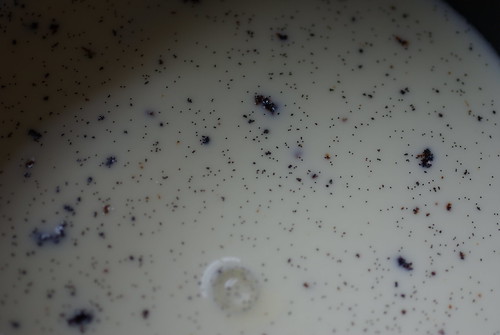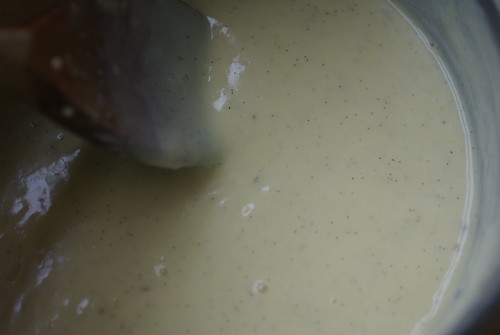This cake is perfect for a pearl anniversary because of the bright, white icing and the light white crumb. Rules for this challenge were flexible meaning we could tinker with the fillings. In order to balance the richness of the icing, I chose to sandwich the layers with tart lemon curd and fresh raspberries. I liked the idea of the iridescent shell (helped by edible cake glitter) hiding layers of fruit inside.
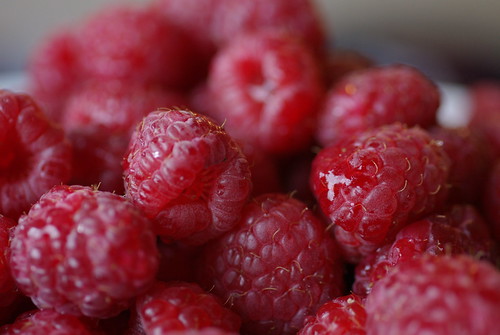
I was a little concerned about the sponge after hearing reports of 'pancakes' from other Daring Bakers. The recipe uses whisked egg whites and baking powder to produce the rise and as I mixed the batter I did have a few doubts. Luckily, my great friend M has years of experience in calming my tizzes and told me to stop panicking and just put the damn things in the oven. They weren't the highest cakes I've ever seen, but I was able to complete the (very stressful) task of splitting each layer without major causalities.

As the cakes were cooling I made a simple lemon curd to spread between the layers. I did have a bit of a curdtastrophe (haha) as it refused to set to a spreadable consistency but, calmed by M, I added some cornflour and disaster was averted. The meringue-based butter cream was easier to make than I had feared.
 Fantastically rich, I think it could have been a bit too much in between the layers and I'm glad I replaced it with the fruit.
Fantastically rich, I think it could have been a bit too much in between the layers and I'm glad I replaced it with the fruit.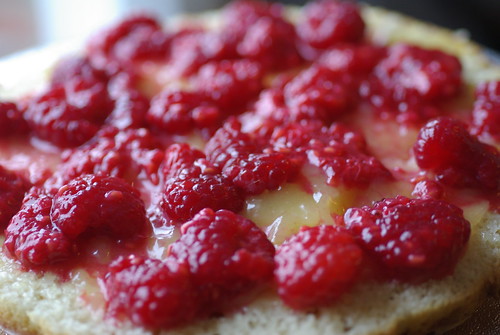 I had a few Pisaesque moments as I assembled the cake,
I had a few Pisaesque moments as I assembled the cake, 
but generally it came together well and the end result was sufficiently pearl-like. I even had time to shower before leaving for the meal so, all in all it was a success. As the cake came out of Marco Pierre White's Criterion kitchen (check me out, serving food in top London restaurants) topped with a sparkler, and delivered to the happy couple I definitely felt that this party cake lived up to its name.
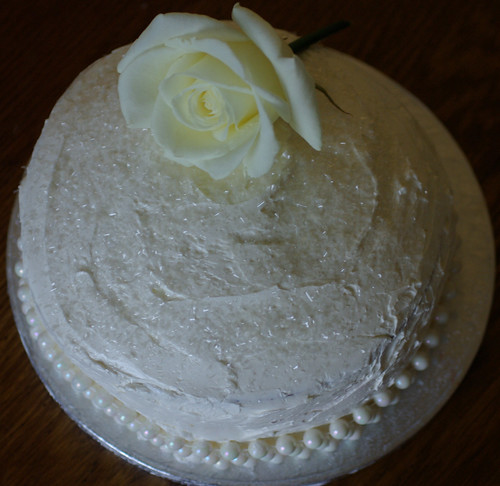
I'm not sure I would use this as my go-to fancy cake recipe as making the batter was a bit of a faff and a standard victoria sponge recipe would probably work as well. That said, it does look very special so, if the occasion warrants it, give it a try.
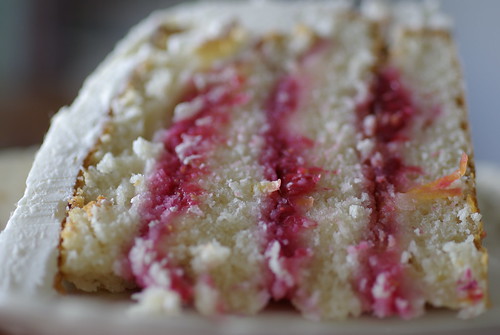
View all the other marvellous creations here.

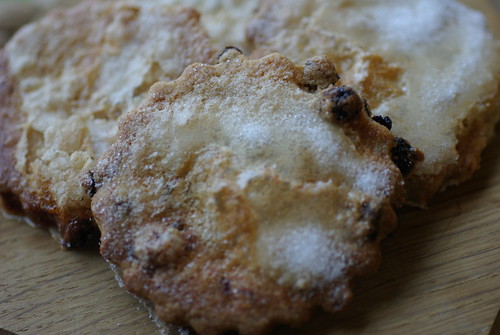

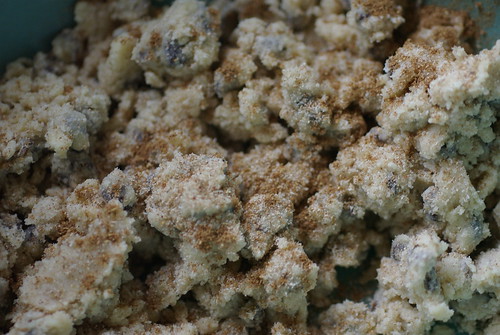 Stir to combine and add a little milk if necessary. You want a soft, pliable dough.
Stir to combine and add a little milk if necessary. You want a soft, pliable dough.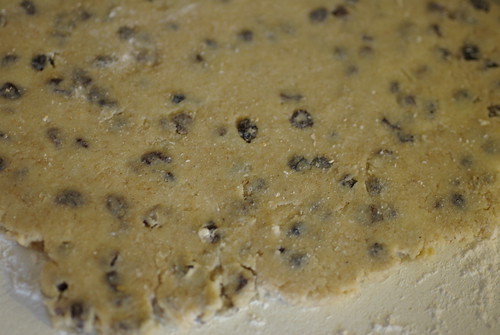 Cut your biscuits with a fluted cutter and bake in the oven for 15-20 minutes.
Cut your biscuits with a fluted cutter and bake in the oven for 15-20 minutes.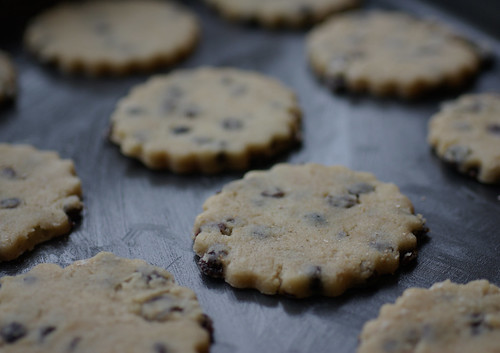
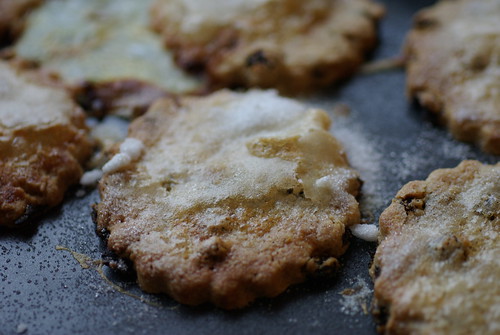

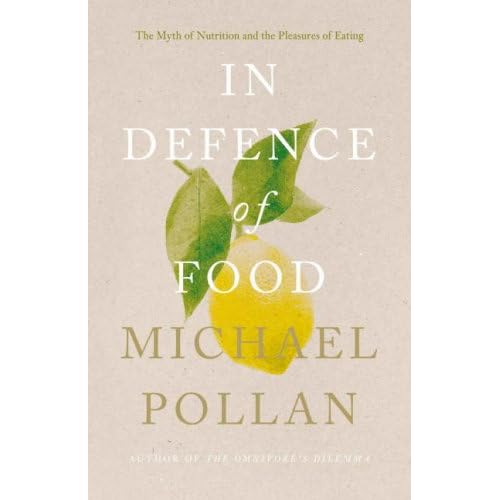
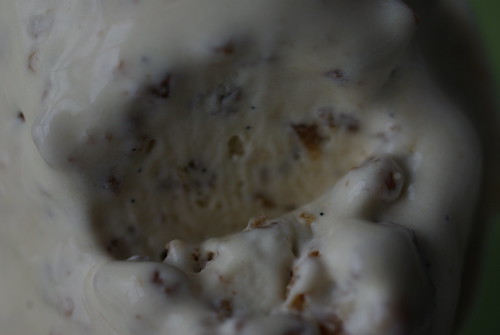
 Add the crumbs, stir well and then spread the mixture on a baking sheet.
Add the crumbs, stir well and then spread the mixture on a baking sheet.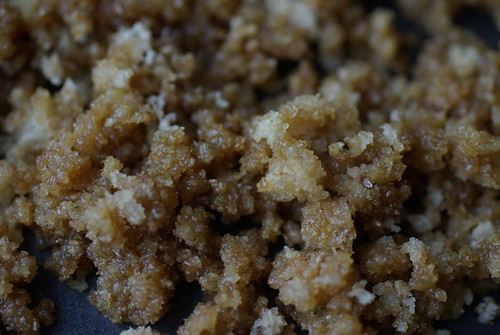
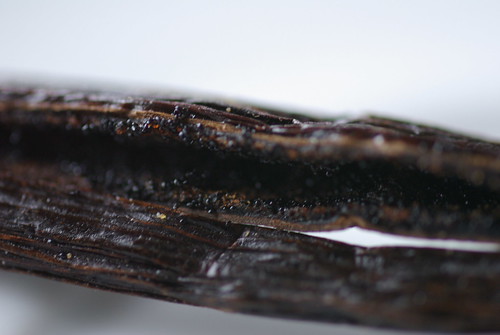 Pour the milk into a heavy-based saucepan, add the vanilla pod and seeds and bring to the boil. Remove from the heat and leave for 15 minutes to allow the flavours to infuse.
Pour the milk into a heavy-based saucepan, add the vanilla pod and seeds and bring to the boil. Remove from the heat and leave for 15 minutes to allow the flavours to infuse.